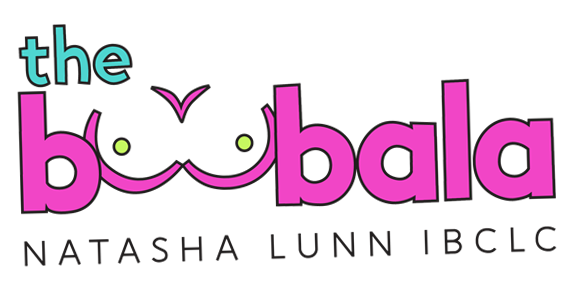Page Content
- Can a baby breastfeed after eating fish?
- Which fish has the most mercury?
- What fish is high in mercury?
- What should a breastfeeding mother avoid eating?
- Which fish will increase breast milk?
- What fish can you not eat while breastfeeding?
- Can I eat fish everyday while breastfeeding?
- What fish should not be given to babies?
- Why can’t I eat tuna while breastfeeding?
- What high mercury fish to avoid while breastfeeding?
Understanding Fish Consumption While Breastfeeding
Breastfeeding mothers often seek to maintain a healthy diet that supports both their well-being and that of their infants. Fish can be a nutritious component of this diet, rich in omega-3 fatty acids, protein, and essential vitamins. However, not all fish are created equal, and certain types should be avoided due to their high mercury content, which can pose risks to a developing baby.
The Risks of Mercury in Fish
Mercury is a toxic metal that can accumulate in fish, particularly larger species that are higher up in the food chain. When consumed, mercury can transfer to breast milk, potentially affecting the infant’s developing nervous system. The U.S. Food and Drug Administration (FDA) and the Environmental Protection Agency (EPA) have issued guidelines specifically for pregnant and breastfeeding women, emphasizing the importance of avoiding high-mercury fish.
Fish to Avoid
Certain fish are notorious for their elevated mercury levels and should be avoided during breastfeeding. These include:
– Shark: Known for its high mercury content, shark should be completely avoided.
– Swordfish: Another large fish that accumulates significant mercury levels.
– King Mackerel: This fish is also high in mercury and should not be consumed.
– Tilefish: Particularly from the Gulf of Mexico, tilefish contains high mercury levels.
– Bigeye Tuna: Unlike canned light tuna, which is lower in mercury, bigeye tuna is best avoided.
While some fish, like albacore tuna, can be consumed in limited amounts (up to 170 grams per week), it is crucial to be cautious and informed about the types of fish included in your diet.
Safer Alternatives
Fortunately, there are many fish options that are lower in mercury and safe for breastfeeding mothers. These include:
– Salmon: Rich in omega-3 fatty acids and low in mercury, salmon is an excellent choice.
– Sardines: These small fish are not only low in mercury but also packed with nutrients.
– Trout: Another safe option, trout is a healthy addition to a breastfeeding diet.
– Canned Light Tuna: This type of tuna is lower in mercury compared to its albacore counterpart and can be consumed in moderation.
Conclusion
In summary, while fish can be a beneficial part of a breastfeeding mother’s diet, it is essential to be mindful of the types consumed. Avoiding high-mercury fish is crucial to ensure the health and safety of both mother and baby. By opting for safer alternatives, mothers can enjoy the nutritional benefits of fish without the associated risks. Always consult with a healthcare provider for personalized dietary advice during breastfeeding to ensure the best outcomes for both mother and child.
Can a baby breastfeed after eating fish?
Yes, breastfeeding moms can eat fish, but you do need to be cautious about what kind it is and how much of it you have. Fish has all kinds of benefits for breastfeeding moms and babies. It’s high in protein and contains omega-3 fats, which are important for optimal development of a baby’s nervous system.
Which fish has the most mercury?
Fish that contain higher levels of mercury include:
- shark.
- ray.
- swordfish.
- barramundi.
- gemfish.
- orange roughy.
- ling.
- southern bluefin tuna.
What fish is high in mercury?
Summary. Fish that contain high levels of mercury include shark, ray, swordfish, barramundi, gemfish, orange roughy, ling and southern bluefin tuna.
What should a breastfeeding mother avoid eating?
Caffeine. It’s not just tea and coffee that contains caffeine – it’s in chocolate, and various energy drinks and soft drinks. It’s sensible to cut caffeine out while breastfeeding because it’s a stimulant so can make your baby restless. If you do drink caffeine, try not to have more than 300mg a day.
Which fish will increase breast milk?
Most preferred dry fish for lactating moms are paal suraa, kaaraa and thirikkai karuvaadu.
What fish can you not eat while breastfeeding?
Fish to be avoided
King Mackerel, Marlin, Orange Roughy, Shark, Swordfish, Gulf of Mexico Tilefish, and Bigeye Tuna. Locally caught fish should be eaten no more than once a week and consumers are advised to check with the local fisheries for further information.
Can I eat fish everyday while breastfeeding?
Eat 8 to 12 ounces of seafood each week.
Many types of seafood are safe to eat while breastfeeding — and seafood is good for your baby’s brain development. It also has healthy fats that are good for you and your baby. Just be sure to choose fish and shellfish that are low in mercury.
What fish should not be given to babies?
For babies, it’s best to avoid high mercury fish, such as ( 22 ): bigeye and bluefin tuna. mackerel. marlin.
Why can’t I eat tuna while breastfeeding?
Avoid: High-Mercury Fish
One food that you absolutely want to steer clear of while breastfeeding is fish high in mercury like tuna, swordfish and mackerel. Even in small amounts, mercury toxins can pass through breast milk to your baby and affect their brain and nervous system.
What high mercury fish to avoid while breastfeeding?
No cooking method reduces mercury exposure. It may help to eat mostly small fish such as sardines and scallops. Large fish that have lived longer, such as swordfish, tuna, shark, king mackerel, and tilefish, have higher levels of mercury because they have had more time to accumulate it.

